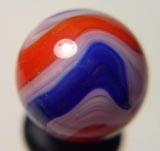Ceramics or pottery is made by forming a ceramic material (often clay) body into objects of a required shape and heating them to high temperatures in a kiln which removes all the water from the clay, and induces reactions that lead to permanent changes to the clay, make it hard, stronger, and insoluble. It may be decorated before or after firing. Pottery is generally broken into three main categories.
Porcelain is a ceramic that is completely vitrified (glass-like), hard, impermeable (even before glazing). It is white or artificially colored, translucent. East Asian traditions classifies pottery into low-fired wares (earthenware) and high-fired wares (often translated as porcelain). High fired ceramics includes stoneware, which is neither white or translucent.
A high proportion of modern porcelain is made of the variant "bone china." Bone china is a type of soft-paste porcelain made from bone ash, feldspar, and kaolin. It has been defined as ware with a translucent body containing a minimum of 30% of phosphate derived from animal bone. Bone china is the strongest of the porcelain or china ceramics, having very high mechanical strength and chip resistance, and is known for its high levels of whiteness and translucency. Its high strength allows it to be produced in thinner cross-sections than other types of porcelain.
Stoneware is a broad term for pottery or other ceramics fired at a relatively high temperature. It may be vitreous or semi-vitreous ceramic made primarily from stoneware clay or fire clay. It is nonporous and does not soak up liquids) and it may or may not be glazed. Many crock pots and jugs are classified as stoneware.
Earthenware is glazed or unglazed non-vitreous pottery that has generally fired at a lower temperature than stoneware or porcelain. Earthenware comprises all primitive pottery whatever the color, all terra-cottas (red clay based), most building bricks, and nearly all European pottery up to the seventeenth century, and American pottery through the beginning of the 18th century. Earthenware, when fired, is opaque, soft and capable of being scratched with a knife. It may be white or light-colored (i.e., slightly greyish, cream or ivory), red, or yellow.
In this category we have we have assembled various porcelain, ceramic, and earthenware pieces of various types and use. See also our Dinnerware Replacements page.








 Buy Akro Agate Popeye marbles on eBay!
Buy Akro Agate Popeye marbles on eBay!